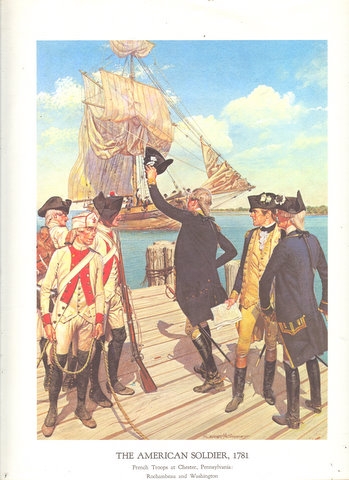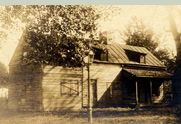
Located in Delaware County, Pennsylvania, positioned 8 miles NE of Wilmington, DE and 16 miles SW of Philadelphia, PA, it is known as the “Cornerstone of PA.”
During its early years Marcus Hook was a major Lenape settlement that became a New Sweden trading post in the year 1640. Called “Chammassungh” or “Finland,” the post was on the west side of the Delaware River, between Marcus Hook and the mouth of Naaman’s Creek. In 1653, a larger tract of land was named New Sweden by Queen Christina of Sweden. A few years later in 1679, the Dutch conquered the Swedish authority and called the area “Marretties hooke” or Marcus Hook.
Under William Penn’s administration in 1682, the inhabitants requested that their town name be changed to “Chichester.” The request was approved and documented by William Penn, but the old town name of “Marcus Hook”, had been fixed in the minds of the public, and to this day continues to be its time-honored nomenclature.The borough was officially incorporated on March 7, 1892.
 “ General Washington receiving good news at Marcus Hook, Chester County”
“ General Washington receiving good news at Marcus Hook, Chester County”
The W3R National Trail is a 680 mile Historic Trail which French Allied troops and Continental soldiers traveled from Rhode Island to Virginia under the command of General George Washington and French General Rochambeau.
“On the morning of 19 April 1775, a column of British soldiers marching toward the town of Lexington, Massachusetts, found their advance barred by a small band of seventy-seven colonial militiamen. Hopelessly outnumbered, the Americans began to disperse, when suddenly a single shot rang out. The American War of Independence had begun.”
[Reference: March To Victory, Dr. Robert Selig]
On September 5th, 1781, at the town of Marcus Hook, Pa. (Chester County, Pa.), a Revolutionary soldier encampment is highlighted as a point of interest. “Here, General George Washington receives word that the French Admiral de Grasse’s fleet (28 ships and 3, 000 soldiers) had arrived safely in the Chesapeake Bay. Not only is General Washington ecstatic, but until their arrival in Marcus Hook, the allied armies had marched on hope alone that de Grasse would do what he had written in the letter that had reached them in White Plains on August 14, 1781”
[Reference: Rochambeau Papers, vol. 9]
“On 17 October, 1781, Lord Cornwallis surrendered his army at Yorktown, Virginia to a combined force of Americans and French headed by General George Washington and General Rochambeau”
[Reference: March To Victory, Dr. Robert Selig]
“It is important to note that during this war, the march of soldiers through American towns had a solidifying impact on American communities along the route. The small community of Marcus Hook, willingly laid aside local and regional prejudices in order to provide logistical support to the troops, minimize the potential for civil-military friction, and pave the way for decisive victory at Yorktown as well as the creation of an independent American republic.”
[Reference: March To Victory, Intro., Jeffery J. Clarke, Chief of Military History]
Click
here for W3R National Link.

Vaisseaux-de-Frise: was suggested during the Revolutionary War by Dr. Franklin[Ashmead p43]
Chevaux-de-Frise:
Ice-Breakers: “The U.S. have at Marcus Hook, 2 landing piers and 4 stone ice-breakers forming the winter or ice-harbor at that point; one landing pier is at the foot of Church St., the other at the foot of Market St. There is also a wharf to the east of the sugar refinery, now in ruins (pre 20th cen) and another pier some distance below Market St. called Walker’s Pier”
[Ref: History of Chester, John Hill Martin, p94]
The Marcus Hook Plank House -
(research under construction)
Pirates
“If traditions be accepted as authority, at the conclusion of the 17th and the first and second decades of the 18th century, the pirates which then infested the Atlantic coast from New England to Georgia, would frequently stop at Marcus Hook, where they would revel. When deep in their cups, they would indulge in noisy disputation and broils until one street in Marcus Hook became known as Discord Lane (presently Second Street).”
[Ref: Ashmead p.457] Discord Lane is documented on the 1701 map of Marcus Hook.
“Blackbeard, who for many years kept the coast in alarm, with his crew it is said often visited Marcus Hook, where at the house of a Swedish woman there, to whom he gave the title of Marcus, although her name was really Margaret, he was accustomed to indulge in the wildest disorder and drunken debauches.”
[Ref: Ashmead p.457]
The Market Square
“The Market Square area of Marcus Hook was established in 1699. Governor Markham presented a request to William Penn to have a weekly market and two fairs. In 1700, William Penn referenced Marcus Hook as a Market Town located at Broad Street and Market Lane.”
[Ref: Ashmead p.458-459, see also 1701 map]
Leading Shipwright Town
“Marcus Hook was noted for the number of vessels (schooners ) that were built there. In 1753, William Hopewell of Marcus Hook, was a leading shipwright. Between the years of 1800-1849, Samuel T. Walker Woodward & Farray, Samuel Trimble, Jacob Sinex, Samuel J. Bruton, William Cranston, Simon Sherlock and Jacob Sinex all engaged in ship-building at Marcus Hook”[Ashmead p.459-460]
Click
here to view the Pioneer Schooner
St. Martin’s Episcopal Church
“In 1699, Walter Martin, conveyed to the town and inhabitants of Marcus Hook an acre and one perch of ground, for a church and free burial-place for the inhabitants. The church was founded in 1702 and called St. Martin’s which was suggested by Emanuel Grubb as commemorative to Walter Martin, its founder who died in 1719 and is buried in a lot in the churchyard.” [Ashmead p460]
St. Martin’s Episcopal Church Cemetery - (research under construction)
Emanuel Grubb [Ashmead p462]
Rev.George Craig [Ashmead p462]
Dr.Caleb Smith Sayers, Died December 3, 1799, he is buried under the floor of St. Martin’s Church.
Cokesbury Church - (research under construction)
The Alligator and Inventor, Brutus DeVilleroi:
Brutus de Villeroi was born in France in 1794. He was a French engineer of the 19th century. In 1833, he completed his first submarine the “Nautilus.” In 1842, he was a professor at the Saint-Donatien Junior Seminary in Nantes, where Jules Verne was a student. During the late 1850’s, DeVilleroi traveled to Philadelphia, Pa. where he developed several submarines. He is recorded in the Federal Census of 1860 as boarding with his crew at the Spread Eagle Hotel in Marcus Hook, Pa. which was owned by his friend and resident of Marcus Hook, Edwin Chandler. DeVilleroi proposed a submarine design to the U.S. Navy, to counter the threat of Confederate States Navy ironclad warships. The U.S. signed a contract with DeVilleroi in 1861 for $14,000. The ship became the U.S. Navy’s first submarine, the Alligator. DeVilleroi died in 1874 and is buried in Philadelphia. [ Ref: www.oldsubsplace.com; http://en.wikipedia.org/wiki/Brutus_DeVilleroi]


 “ General Washington receiving good news at Marcus Hook, Chester County”
“ General Washington receiving good news at Marcus Hook, Chester County”